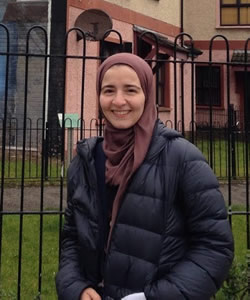In the United Kingdom, the overarching narrative on feminism is that of loss. The homeland of the glorious and revolutionary suffragettes is believed to be witnessing stagnation in the women’s movement—its young women are dismissed as “not feminist enough," indifferent to women’s emancipation, or even repelled by the term “feminist.” In some ways, these claims are not completely unfounded and are not limited to Britain. When asked what feminism means to them, many of the most popular female pop stars demonstrate either a misunderstanding of the term or an unwillingness to identify with the movement out of fear of being labeled “man hater.”
During my stay in London, I have witnessed many phenomena that can testify to a feminist movement left unfinished. Feminism made its presence in mind by its absence in the public sphere. It was absent in the Tube stations, where advertisements prey on over-sexualized photos of women to market music albums, movies, and consumer products. I was most struck by the subtle—but upon closer examination, immanent—sexism in the UK poster of the movie A Most Violent Year. In the poster, we get a profile view of the hero, Oscar Isaac, who is dressed in an elegant suit, and the heroine, Jessica Chastain, who wears a less “classy” but very revealing black dress. As with her male counterpart, one can only see one side of her face. However, unlike him, the rest of her body is captured by a very peculiar angle and lighting that serves to reveal more of the bare skin of her cleavage than her dress. A simple Google search on the movie poster reveals more obvious sexism. For there is another version of the poster where Chastain’s body is even more sexualized. In this poster, a larger area of her cleavage is rendered visible, as she is made to turn her body toward the viewer and more key light falls on her skin. Simultaneously, Oscar’s body receives less attention, as the shadows engulf his entire figure, except for his face, and his body is turned away from the viewer, so much so that we are made to see his back, not his arm.
The objectification, if not degradation, of women was also apparent in the unnuanced coverage that Fifty Shades of Grey received in British mass media. Some feminists have attempted to fight against the movie’s portrayal of female sexuality as submissive and against its problematic message that a female’s “freedom is slavery,” to use an Orwellian phrase. However, British mainstream media has not heeded these critiques. Not only that, but merchandise has also been created to market the problematic, unhealthy gender politics pictured in the movie as desirable. For example, in Oxford street—under an invitational sign stating “let us enlighten you”—an adult shop dedicates its display window to showcasing special Fifty Shades of Grey merchandise consisting of, among other objects, shackles, masks, and whips. In the same street, not too far away, Primark, a popular destination for thrifty but fashion-conscious young women, jumps on the bandwagon of Fifty Shades mania by including in its latest collection a women’s t-shirt printed with the phrase “Mrs. Grey.”
Despite the normalization of female objectification in the public sphere, mass media, and pop culture, one cannot speak of the full disappearance of feminism in the United Kingdom. The struggle for the empowerment of women is still alive in a few pockets around London, but most of the time, only visible to non-British eyes, or to those who actively seek it out. One type of feminist quest targets “the other” women who, most of the time, are located in Sub-Saharan Africa. Posters made by NGOs represent them as being ill-treated and marginalized by members of their communities, especially males, and waiting for women and men from the developed world to rescue them. Another example in which “the other” women are brought to mainstream culture can be found in an exhibition on veiled Muslim women by British-Iranian photographic artist Sara Shamsavari. The exhibition was set up at the Royal Festival Hall as part of the events of the Women of the World festival. The exhibition aims to deconstruct the monolithic image of the Muslim women that many in the western world maintain, and to show Muslim women’s creativity in using the hijab (veil) to express their individuality. While this is certainly not groundbreaking news for me, having been born and brought up in a Muslim-majority country, I can see that it serves as a step towards bridging the gap between different cultures.

